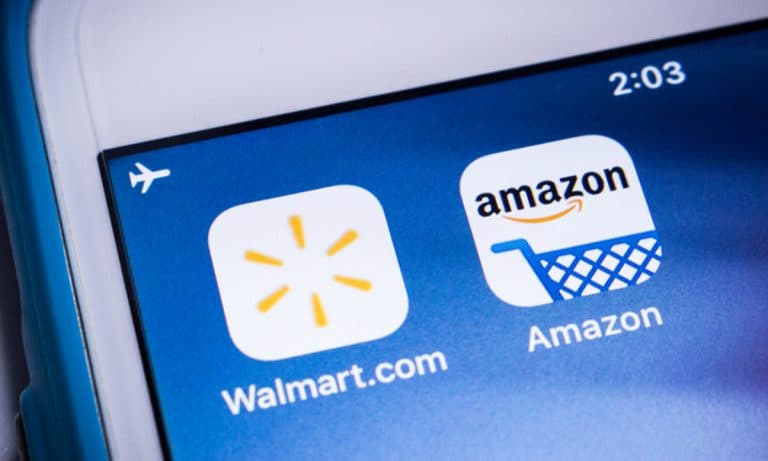This week, Amazon and Walmart have been locked in intense competition, each striving to secure the loyalty and spending of shoppers.
On Wednesday (Oct 11), Amazon concluded its Prime Day event, and the results are in. Meanwhile, Walmart also concluded its event Thursday (Oct. 12), and the results are pending. PYMNTS reached out to Walmart for sales figures but was guided to the company’s latest earnings report.
How Did Amazon Fare?
According to Amazon, the company’s Amazon Prime members managed to save over $1 billion through millions of deals during the two-day holiday launch of Prime Big Deal Days, marking a robust start to the 2023 holiday shopping season.
Throughout this 48-hour shopping extravaganza, Prime members reportedly placed orders for more than 150 million items from Amazon’s independent sellers, many of them small and medium-sized businesses.
During the opening day of the event, Amazon revealed that items from small businesses, including Clean Skin Club’s Clean Towels, Hula Home’s Spray Bottle, and PicassoTiles’ 100 Piece Set, rose to become some of the top-selling products in the United States.
This marks the second consecutive year in which Amazon has initiated the holiday shopping season with a two-day exclusive shopping event for Prime members.
“This event outpaced last year’s holiday kickoff event, with more Prime members shopping this year,” said Doug Herrington, CEO of Worldwide Amazon Stores in statement. “Millions of Prime packages in the U.S. have already been delivered, and we’ll continue to offer fast, free delivery across our wide selection throughout the holidays.”
But Amazon didn’t just report on sales. They reported speed.
Amazon’s event saw more than 25 million purchases eligible for same-day or next-day delivery by U.S. Prime members. Additionally, hundreds of thousands of items managed to reach their destinations within four hours from the moment of order. On the event’s first day, the fastest delivery in the U.S. occurred in Ohio. An order placed at 7:20 a.m. was delivered in 54 minutes, reaching the doorstep by 8:14.
Amazon and Walmart’s Focus
Throughout its Prime Day event, Amazon gave top priority to personalization for Prime members by streamlining the process of uncovering deals that matched their preferences. It employed customized suggestions based on consumers’ previous purchases, browsing history, and items saved in their lists.
Additionally, Amazon mentioned in its announcement that Prime members could also get ahead of the curve by signing up for invite-only deals on select products that were expected to sell out quickly and could choose the delivery option that best suited their needs.
Read more: Amazon and Walmart Fight for Early Holiday Shoppers in Head-to-Head Battle
Amazon also offered deal-alert notifications in which shoppers could subscribe to receive notifications related to their recent Amazon searches and recently viewed items. Meanwhile, individuals who owned an Alexa device had the option to receive deal notifications from Alexa up to 24 hours in advance for eligible items saved to a wish list, cart, or items saved for later. Moreover, they could instruct Alexa to remind them when a deal became available or to handle the purchase on their behalf.
Conversely, Walmart had not acknowledged Walmart+ members or emphasized them in any special way but promoted “online deals up to 60% off” and recruited John Legend for a campaign.
Difference Between Memberships
Walmart+ and Amazon Prime are subscription services with different pricing and benefits. Walmart+ costs $12.95 per month or $98 per year, while Amazon Prime is priced at $14.99 per month or $139 per year. Both services offer a 30-day free trial.
Amazon Prime offers discounts, including Amazon Prime Student for college students at $69 per year or $7.49 per month, and a $6.99 per month option for EBT or Medicaid cardholders. Walmart+ introduced the Walmart+ Assist program, offering a 50% discount on monthly and annual memberships, bringing the cost down to $6.47 per month or $49 per year for government assistance recipients and students.
In terms of delivery, Amazon Prime provides fast delivery, with options like one-day delivery for over 10 million items, same-day delivery on qualifying orders, and two-hour grocery delivery for a minimum $150 purchase.
Meanwhile, Walmart offers free two-day shipping on orders of $35 or more for all customers. Walmart+ removes the $35 minimum requirement for next-day, two-day, and standard shipping, but it doesn’t apply to third-party sellers. Walmart also offers one-hour grocery delivery with a $35 minimum order and a $5.99 fee for orders below $35.

